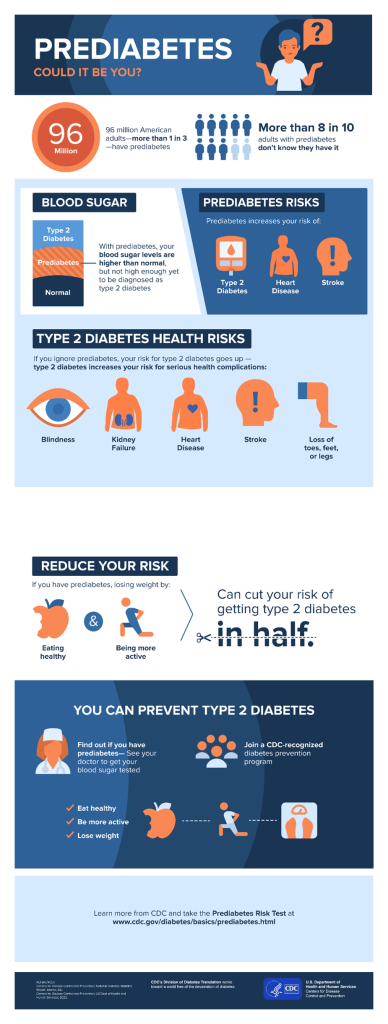
Diabetes is a chronic condition that impacts 37 million people in the United States. What’s even more shocking is 1 in 5 people don’t know they have it. Approximately 12.1% of the adult population in Ohio have a diagnosis of diabetes. Unfortunately, there isn’t a cure but there are various lifestyle factors that lower your risk. These include weight loss, choosing healthy foods, and increasing your activity. In the United States, more than 1 in 3 adults have prediabetes and 80% of them are unaware they have it. Prediabetes raises your risk for developing type 2 diabetes. Approximately 10% of people with prediabetes progress to type 2 diabetes each year. For most individuals who develop type 2 diabetes, the beginning of the disease started several years before they met the criteria for diagnosis. By the time someone is diagnosed with type 2 diabetes, 50-70% of their pancreatic islet cells are not functioning. However, if prediabetes is caught early enough, proven and achievable lifestyle changes can help to reverse it.
Prediabetes is where an individuals blood glucose levels are higher than normal, but not high enough to be diagnosed with type 2 diabetes. Someone may have prediabetes for years without any symptoms. The real burden for people with or at risk of type 2 diabetes is the long term, life threatening complications of the disease that are often asymptomatic. Prediabetes is associated with an increased chance for developing serious health conditions such as heart attack, stroke, blindness, neuropathy, or kidney failure. Not only can diabetes lead to serious health complications, but it’s also very expensive. Medical costs for those living with diabetes are more than twice as high compared to those without. Diagnosed diabetes costs ~$12.3 billion in Ohio each year. Risk of early death for adults living with diabetes is 60% higher than adults without.
It’s important to have your healthcare provider to check your Hemoglobin A1C or fasting blood glucose to determine if you meet the criteria for diagnosis of prediabetes. Some risk factors include: being overweight, being > 45 years old, having a parent or sibling with type 2 diabetes, physical inactivity, a history of gestational diabetes, or having polycystic ovary syndrome. If you would like to see where you stand, take this 1-minute prediabetes risk test. If your score indicates a high risk for prediabetes, visit your doctor for a simple blood test to confirm your result.

Written by: Shannon Smith, MFN, RD, LD, CDCES, Program Coordinator, Wood County Family and Consumer Sciences
Reviewed by: Susan Zies, M.Ed. Extension Educator, Family and Consumer Sciences, Wood County












